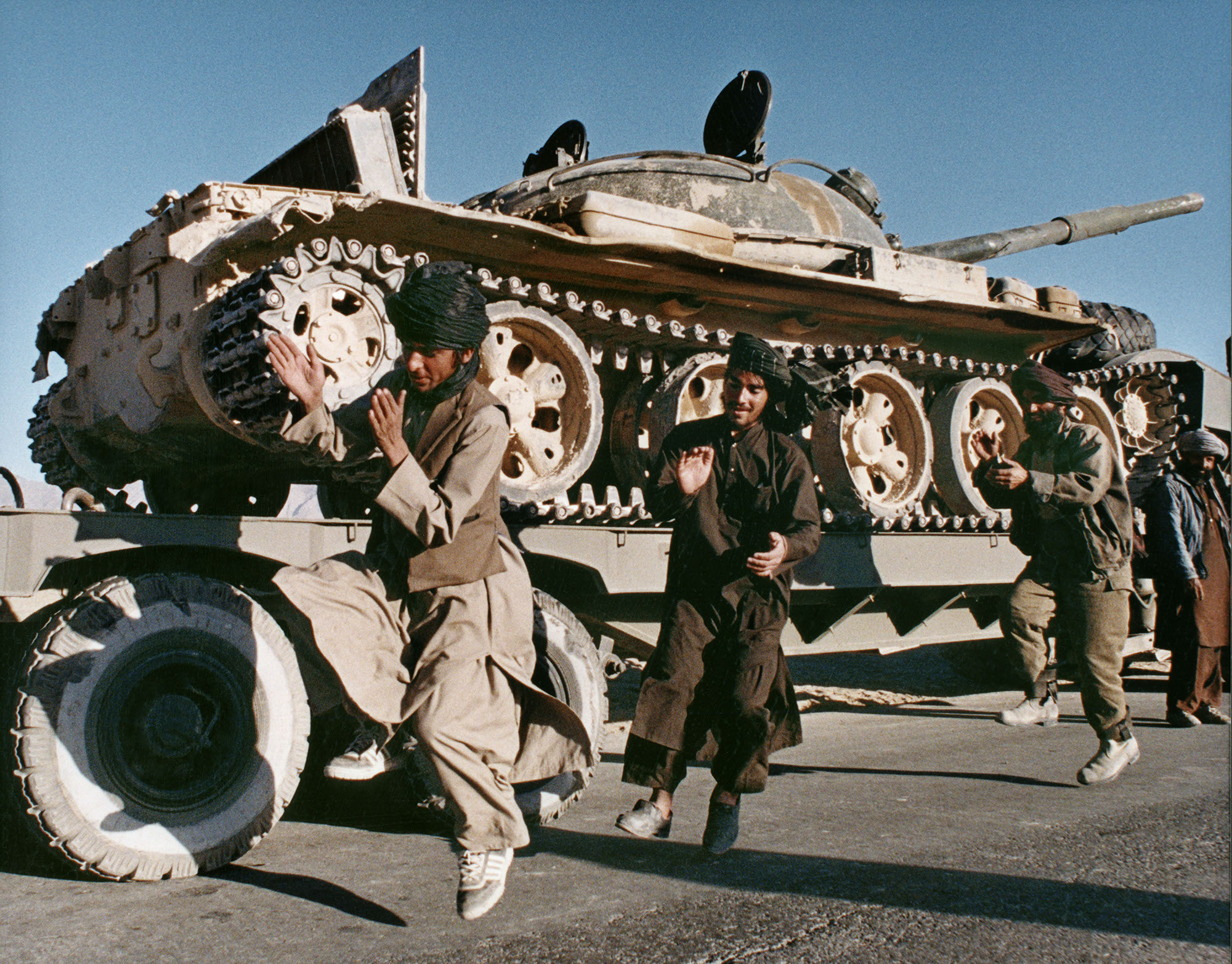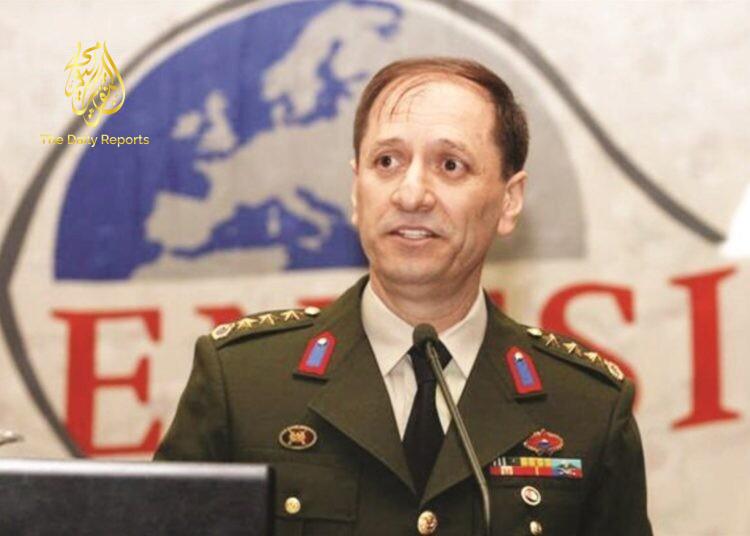At the point when Taliban warriors rode victoriously into Kabul air terminal early Tuesday, they did as such on U.S. pickup trucks, wearing American-made regalia and displaying American M-4 and M-16 rifles. Then, at that point, they went through hours analyzing the mother lode of materiel that U.S. assembles inadvertently granted them what had been the United States’ last redoubt in Afghanistan. (Taliban armed themselves)
The gathering’s blindingly quick move throughout the majority of Afghanistan got it billions of dollars of U.S. military gear and weaponry given to the Afghan National Defense and Security Forces, which fell in the 11 days before the Taliban held onto Kabul, the capital, on Aug. 15. Afghan warriors who didn’t give up shed their garbs and gear and escaped, following a significant number of their military and political pioneers.
“This is ghanima,” said one formally dressed Taliban warrior: war goods. With a gloved hand, he gobbled up the night-vision goggles on his ballistic head protector, resembling the actual model of an Afghan officer the U.S. had attempted to help make to wipe out individuals like him. He strolled inside a shed and stared with his crew mates at the U.S. International safe haven helicopters sparkling under amazing overhead lights.
For their work, Taliban warriors harvested right around 2,000 Humvees and trucks; in excess of 50 shielded battling vehicles, including Mine-Resistant Ambush Protection vehicles, or MRAPs; scores of ordnance and mortar pieces; in excess of twelve maturing yet working helicopters and assault airplane; twelve tanks; seven Boeing-produced robots; and tons of shots, as indicated by a rundown arranged by the Oryx Blog, which tracks weapons utilized in clashes. (Taliban armed themselves)
A considerable lot of the things had been crippled by withdrawing U.S. troops or are past the ken of Taliban contenders to work. However, a severe consequence of the tumultuous Western withdrawal from Afghanistan is that the very gathering the U.S. expelled 20 years prior isn’t just back in power however preferred prepared militarily over at any point before to repulse foes and uphold its image of abusive guideline.
Not exactly 33% of the $83 billion the U.S. spent on the Afghan guard powers went toward materiel, gauges say. That it currently lies in the possession of the past U.S. foe is a wellspring of humiliation for the Biden organization.
The arms have changed the Taliban into a slanted rendition of the military the U.S. needed the Afghans to have. One authority in the Taliban’s tip top Fateh Zwak bunch gladly flaunted the brown-dark pickups once utilized by the CIA-upheld National Directorate for Security, the Afghan government’s insight administration. The main thing various was the symbol. (Taliban armed themselves)
Large numbers of the contenders put on a good show as well, exhibiting what Dan Grazier, who filled in as a Marine in Afghanistan and is presently a protection strategy examiner at the Washington-put together Project with respect to Government Oversight, said was conduct recommending they had once been important for the Afghan security powers that had been prepared by Americans.
“The position, the manner in which they’re holding the rifles, the trigger finger, how’s it’s level and laying outside the trigger gatekeeper,” he said. “That is trademark American military preparing not too far off.”
The extra U.S. gear is ubiquitous in Kabul, where Taliban warriors using sparkly dark M-4s on dim green Ford Ranger trucks is a standard sight. Humvees secure greater government structures. The U.S. gave the Afghan armed force very nearly 5,000 M-4s and assault rifles in 2017, as per reports from Washington’s Special Inspector General for Afghanistan Reconstruction.
Less every now and again seen — on the grounds that they are not really effectively usable — are the more deadly weapons, including the A-29 Super Tucano, a turboprop assault airplane suggestive of a World War II-period Mustang yet with current flying, and helicopters, for example, MD-530s and Black Hawks. (Taliban armed themselves)
U.S. troops “neutralized,” or delivered inoperable, 73 airplanes abandoned at Kabul air terminal, alongside nearly 70 MRAP vehicles and 27 Humvees, U.S. Headquarters said. The conscious harm was clear Tuesday, when Taliban authorities visited the air terminal.
Albeit the A-29s were masterminded perfectly in their shelter, they remained in the midst of a dump of camo-designed sacks, socks, projectile boxes, explosives and disposed of food bundles. Their flight narrows were open, and electronic boxes that work crucial frameworks, including the starter for the engines, had been torn out, their parts slammed to bits.
A C-130 vehicle plane left outside hunched down on one wheel, and the Black Hawks had their windows crushed and junk flung inside narrows that once conveyed fundamental supplies to Afghan troopers or cleared them, here and there alive however frequently dead, back home.
Most destroyed were the MD-530s. In flight, they were agile helicopters, humming around and nearly jousting with Taliban contenders attacking government stations. Presently they were smooshed together in the overhang, as though a goliath youngster had flicked them into each other. Their joysticks were cut at the handle. (Taliban armed themselves)
The disorder left a few Afghans furious, including one columnist who was no companion of the Taliban. Be that as it may, he was additionally unsurprised, he said. “This is the thing that we’ve generally expected from Americans,” he said.
A portion of the Afghan flying corps armada had additionally been taken by their Afghan pilots to the Panjshir Valley in northern Afghanistan, where the counter Taliban obstruction is bunkered, or to adjoining Uzbekistan. Experts in Uzbekistan affirmed last month that around 46 Afghan military airplanes arrived in the country.
In spite of the fact that jokes via web-based media about a “Taliban Air Force” are exaggerated, the gathering has figured out how to work a couple of helicopters grabbed from Afghan powers before they could annihilate them. Many Afghan flying corps pilots, a considerable lot of them students, are as yet caught in Afghanistan; some have been constrained into flying them for the gathering, said pilots met by The Times.
Recordings posted via web-based media from the southern city of Kandahar show a Black Hawk flying the Taliban’s white flag during a tactical motorcade this week. An intermittent whump-whump of a Russian Mi-17 helicopter can in any case be heard over Kabul.
None of the airborne armada left behind is forefront, said a U.S. pilot and coach who asked not to be named to remark openly. The airplane, he said, were “deprived of each cutting edge part.”(Taliban armed themselves)
“They were cut up trucks, on the grounds that the climate didn’t require the extravagant stuff — they didn’t have the standard self-preservation frameworks,” he said, adding that the guidelines for offering the hardware to the Afghan aviation based armed forces required some disarmament in any case.
Also, anything that flies presently most likely will not be doing as such in a couple of months, said an Afghan aviation based armed forces colonel who talked on state of obscurity since he as of late got away from the nation and still has family in Afghanistan. In any event, when the Afghan armed force existed, he said, it had no chance of keeping up with the airplane without workers for hire and a consistent pipeline of extra parts; greater fixes required the airplane to be taken to U.S. bases in the United Arab Emirates or Qatar.
“These airplanes aren’t flyable,” he said. “I’m glad they’ll attempt to fly them. They’ll kill a great deal of Taliban when they do.”
All things considered, the Taliban is in an ideal situation militarily than it used to be. There is additionally the advertising overthrow in seizing U.S. materiel, said Damien Spleeters, delegate overseer of activities at Conflict Armament Research, a gathering that tracks arms moves in struggle zones. “Weapon frameworks that are observable, similar to hostile to tank directed weapons or man-compact air-safeguard frameworks, or effectively conspicuous and associable with the U.S. offer publicity openings regardless of whether they would be less preferred in the field,” he said. (Taliban armed themselves)
The more noteworthy concern, Spleeters said, is that the arms could channel through to other aggressor bunches in Afghanistan — with or without the Taliban’s endorsement. He highlighted what occurred in Iraq, Syria and Yemen, where arms that the U.S. provided to intermediary bunches frequently ended up in the possession of groups threatening to the U.S. (Taliban armed themselves)
“Most importantly once you supply weapons to parties in struggle you open a Pandora’s crate. These weapons will ultimately wind up in different hands,” Spleeters said. “It resembles an unlimited free pass. Providing weapons unavoidably winds up in different entertainers than expected getting their hands on them sooner or later.”











